
Spontaneity is a travelers’ skill that most probably I have already mentioned plenty of times. However, courage is only one factor when one looks for an spontaneous trip, and other aspects also matter, such as free time, being familiar with the destination, and of course, the budget. In my case, all of these circumstances met each other.I have already shown you two different aspects of Poznań, so now I would like to move to other terriorites within the wonderful region of Wielkopolsksa.
The other important historical city I visited, Gniezno, was not so far away from Poznań - maybe it takes like half an hour by train to get there. Although Gniezno is rather a little town today, it has an exceptional historical role being the first archbishop’s seat and the first capital of Poland (pierwsza stolica Polski) as well.

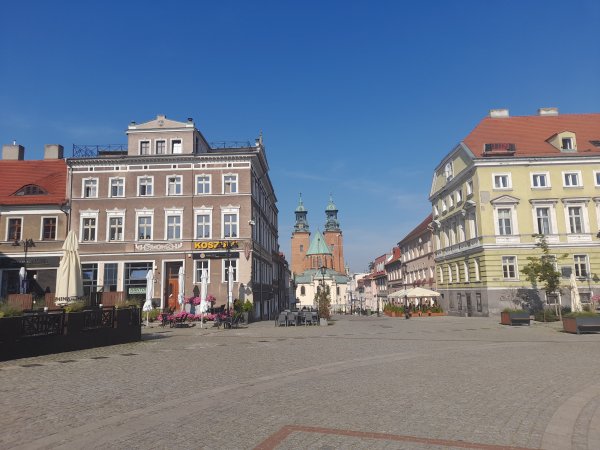

If you, dear reader are from Hungary, you can feel the similar vibes with our city, Esztergom (in Polish: Ostrzyhom), which was the first religious and administrational center of our country, but nowadays, unfortunately, is considered a small town. After all, it is not that big surprise that the two cities are the twin towns of each other due to their historical similarities.


And now it is time to discover the legend of the white crowned eagle I mentioned before. Namely, the forefather of Poles, Lech, whom I have already written about in my first article on Poznań, was looking for a new home.


Then, when he was passing by the swamps and lakes of the present-day’s city, he saw a miraculous, giant white eagle descending from the sky to its nest, and he took it as a good sign, saying: ‘Here we build a nest!' The word for nest in Polish is gniazdo - hence the name of the place.


Then the mythical bird became the symbol of the coat-of-arms of Poland even until today, no matter which one the ruling dynasty was. That is why the eagle is so important in Greater-Poland, that it could appear in Catholic churches throughout the whole region.
If you approach the entrance of the Museum of the Origins of the Polish State (which is in Gniezno for obvious reasons), there are plenty of coat-of-arms representing the crowned eagle, but it is also the coat-of-arms animal of the city itself.



The core of the city, not so surprisingly either, is called Lech’s Hill (Wzgórze Lecha), where the cathedral itself is located as the central building.
This magnificent piece of architecture is somewhat similar to many other Polish cathedrals I had seen before, but knowing that the Catholic church of Poland was established in that very place made it completely unique.

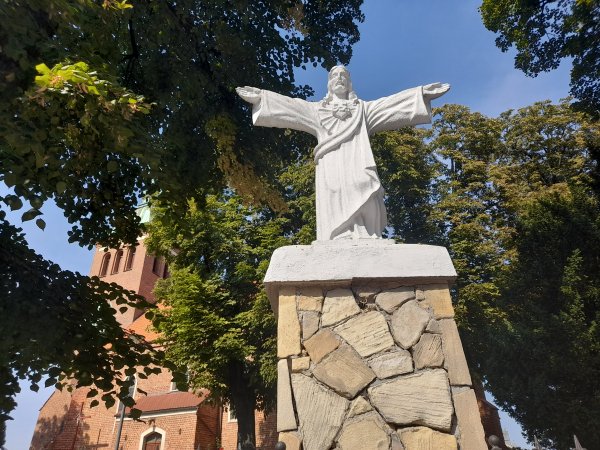
Unfortunately, the shine of Gniezno ended when Czech duke Břetislav I. (also called as the ‘Bohemian Achilles’) destroyed the ancient Slavic fortress (gród) of the hill.
The city never had the same flourishing again, thus the Polish leaders decided to move the capital to Kraków, which had a much safer and better strategic position. At least one can still observe some models to see how the ancient castle must have looked like.

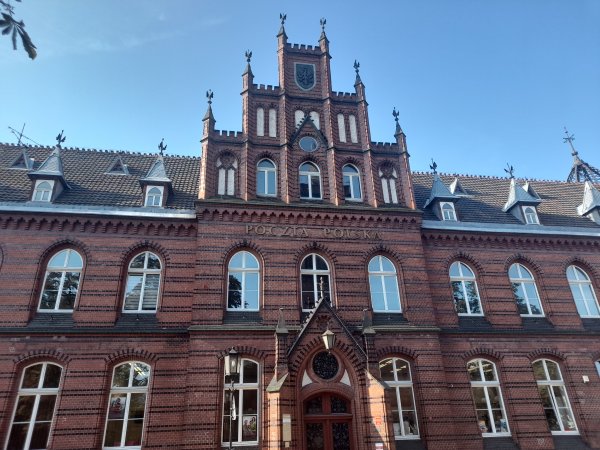
Actually, there was nothing complicated about this conquest: by that time, Bohemia was temporary so strong that the duke even captured Wrocław and parts of Silesia for a while.
We might think that Poland is a so many times bigger country, but we need to take it into account that by that time Poles were divided, and the Polans settling in the region of Wielkopolska meant only one Lechite (Proto-Polish) tribe out of dozens of them.


It was also this area according to some inscript where Mieszko I, duke of the Poles was baptized in 966, and his son, Bolesław I the Brave has a statue by the cathedral as where.
The local cult of the two rulers is spread all around the city though: the most famous statue of the king is located on the long market street leading to the main square, while father and son also have twin statues close to the Museum of Polish State.


Lech himself also got a fabulous statue on the shores of Jezioro Jelonek (Lake Jelonek) where you can inhale the most marvelous view on Lech’s Hill and the cathedral.
The figure of the pagan warrior-leader with his long spear and round shield is so perfectly installed, that if you look at his finger, Lech exactly points to the hill, where he saw that certain eagle. You can even imagine him saying ‘Here we build a nest!’, although the greenish lakeside is a real gem of the city anyway.



However, there are other important historical characters in Gniezno, like the gorgeous statue of Bolesław II the Bold, or the statue of the royal dynasty’s namesake, Piast the Ploughman (sometimes the Wheelwright), which was in a further park unfortunately I was not able to visit.
It is an interesting fact that the forefather of the royal dynasty of Bohemia, Přemysl is also said to be a ploughman. I could also meet the statue of a knight which was my very first encounter at the railway station.


Moving from rulers to saints, there are also plenty of inevitable saints who have their own cult in the city - just like St. Adalbert (in Polish: św. Wojciech), bishop of Prague, who is a patrone of Gniezno. This saint, who has an enormous statue in the city, is respected in three countries.
He was from Czech territories, then he was the bishop who baptized first Hungarian king Stephen I (the Great Basilica of Esztergom, apart from Our Lady, even bears Adalbert's name). Later he went to Pomerania and Prussia for a mission to convert the Baltic pagans there. Finally he was killed and became a martyr of the Catholic church.


Another important local holy person is connected to Hungary, because the blessed princess Yolanda of Hungary (in Hungarian: Árpád-házi Jolán, in Polish: Jolenta Arpadówna) was the daughter of King Béla IV.
She got married to Duke Bolesław the Pious who ruled in Gniezno. She was buried in the city and has such a great cult in Poland that her relics are located in the chapel of the monastery she founded in the city.



To my surprise, I could see a prayer in one of the churches written both in Hungarian and Polish, where one could pray in order to canonize Yolanda as a saint of the Catholic church, which she is a candidate of.
I could immediately see the Hungarian flags close to her altar, but in fact, I thought first that it was an altar of St. Kunigunda (actually the sister of Yolanda), who got married to the king of Poland.
I was also thinking that it could be an altar of St. Elisabeth, aunt of the mentioned two women, who came from the Árpád dynasty as well and had a beautiful statue in the same church. In fact, another Yolanda, Violante de Hungría whom I mentioned while writing about Valencia, was also the aunt of Blessed Yolanda, having the same name.
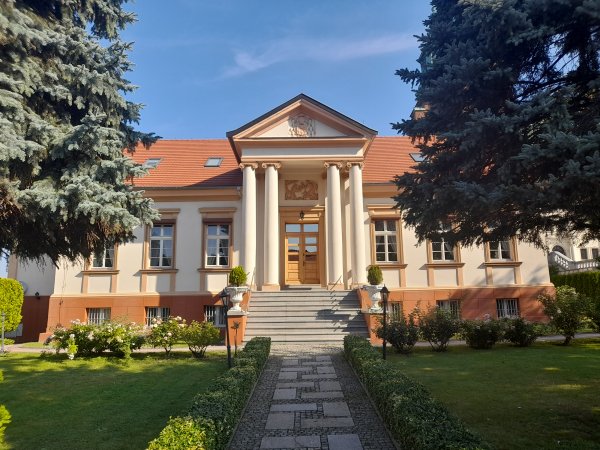

I also found a church which reminded me to an important and tragic chapter of modern Polish history when I was walking at the courtyard of the Church of Holy Trinity (Kościół pw. Świętej Trójcy).
There was a plaquette on the wall as a memorial monument for those victims of the Katyń massacre who were born or related to Gniezno. The terrible series of murders commited by the Soviet Union led to the death of thousands of Polish military officers.
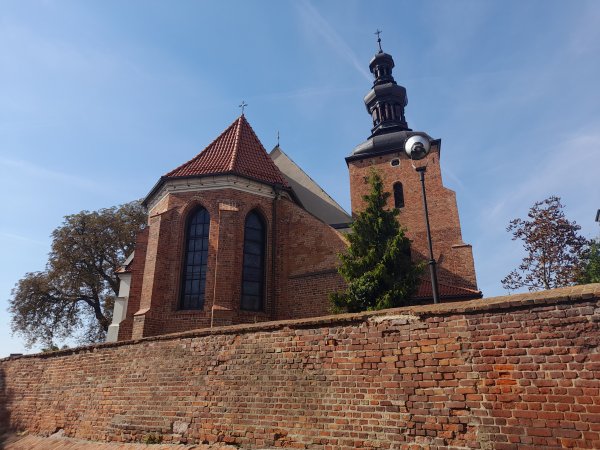


The victims were mostly chief and reserve officers, because the aim of the Soviet regime was to eliminate the intellectual class of Poland, thus diminish the resistance for the Soviet invasion after the war.
Since Poland was the part of the Eastern bloc, the topic was a taboo throughout many decades and officially it was said to be committed by the SS and the German Army, which was actually not true.


Gniezno, apart from its focused, but rich history is also a charming little town full of ice cream and coffee shops, flowers, terraces, balconies and a slow-paced, relaxed life.
Some buildings of the Adam Mickiewicz University are also located here. And, speaking of monuments, one should also mentioned some extraordinary and rather contemporary sights: one of them is the dozens of small rabbit figures you can find on the streets Gniezno.
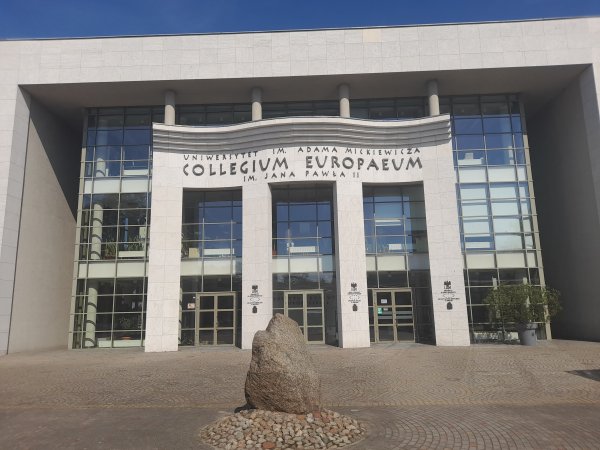
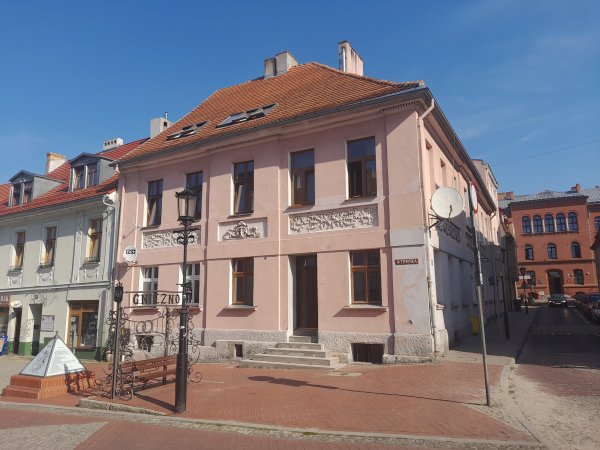
These rabbits, just like the gnomes of Wrocław (krasnale), have different costumes and professions, and one can look for them with n application, as the part of a special sightseeing trail.
The rabbit was chosen for a particular reason: in Polish the animal is called królik, which is similar to the word for king (król), so this is quite easily a kind of pun.



Another modern, let's say, 'sight' of Gniezno is an actual fragment of the original Berlin wall, which is turned into an open-air artistic installation and is put in the suburbs - which is interesting, a couple of meters from some avarage family flats.
I would have never thought that I would see a part of the Berlin wall like that, and it was going to happen in the first historical capital of Poland.


I have already talked about nature a little bit regarding the parks and lakes of the two cities, but now I would like to invite you for an authentic trip to the intact, secret lands of Greater-Poland. At this point, I need to praise the public transportation of Poznań a little bit.
It was very easy and comfortable in general to travel within the city, particularly in terms of the tramlines, but it was a surprise for me that the same tickets can also be used to take a bus within the agglomeration of community of the city.
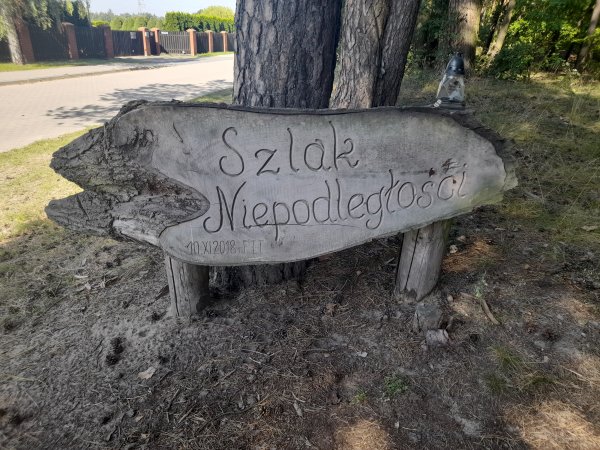

This way I could reach the village of Kicin in twenty minutes, which was important to me since it was the starting point of my hiking trip: the final destination was Dziewicza Góra (Virgin Hill), which had a wonderful, 40 meters high view tower.
My trip was not only a genuine experience of the Polish countryside with cottage houses, wooden blocks and well-kept, traditional gardens, but I could feel the whole, enchanting wilderness all around.


As soon as I began to walk towards the pine trees. I saw amazing, huge open fields to the left and saw my first real Polish swamp to the right; the second one is important because the world of swamps and marshes are inseparable from the old Slavic myths and folklore characters.
I could also hear some eagles and birds of prey in the distance, while the falling leaves of the autumn forest made such a constant sound that one could feel that a deer, wild boar or a bear could come in every single moment (there was also oak, birch and beech among the species, not only evergreens).



Fortunately this was not the case, because Puszcza Zielonka (‘Green Wilderness’), as I read about it and asked some locals, is completely safe during the day and also suitable for family trips, in spite of all the tricky, eerie noises the forest makes.
Actually, the word puszcza does not sound familiar as a coincidence: it is a far away relative of Hungarian word puszta, which has a Slavic etymology, but a completely opposite meaning (it means wasteland, which is another similar word, pustynia in Polish, and it is also used for desert). Eventually, the root meaning of all of these words, no matter if in terms of a desert, wilderness or wasteland, refers to 'emptiness'.
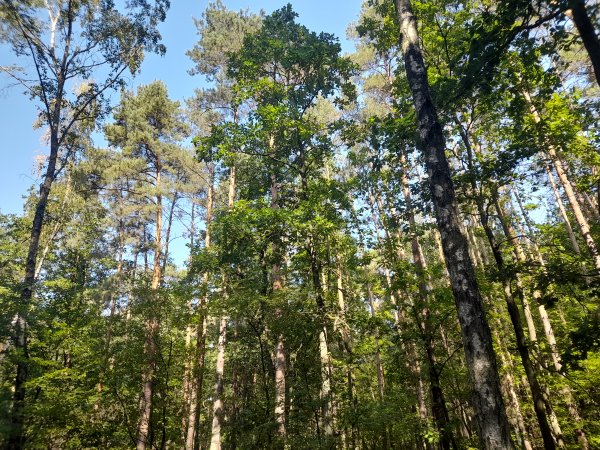

Puszcza Zielonka is a reservation that consists of many towns and villages around Dziewicza Góra (Lechlin, Czerwonak, Turostowo, Pobiedziska, Murowana Goślina) and hosts plenty of animals. There are also some rivers and lakes in the area, such as Jezioro Kowalskie, Jezioro Swarzędzkie or Biezdruchowo, and mesmerizing flower fields like the one close Babica and Żalik.
Mostly, as the vast majority of Wielkopolska, it is a flat area, that is why every hill which is a little bit higher than the surface here is considered not as wgórze, but góra (literally: ‘mountain’), which was a bit funny and strange for me, even though we usually do the same in Hungarian.


Of course, there is no hill without local legends. Dziewicza Góra is also known as Góra Anny (Anna's Hill), because there is a story telling us that a young girl called Anna was walking in the forest.
Suddenly she met a huge, scary bear who was injured on its paw by an arrow. Anna was afraid at the beginning, but then she felt pity when she saw the suffering animal, who was said to be the kinf of the woods and respected by the local dwellers.


She washed the wound and healed it with some herbs, and due to her care, the bear turned into a handsome knight. It turned out that he was cursed and the only thing that could save him was the innocent love of someone. It is not a surprise that the two married, as it should be in a nice fairy tale.
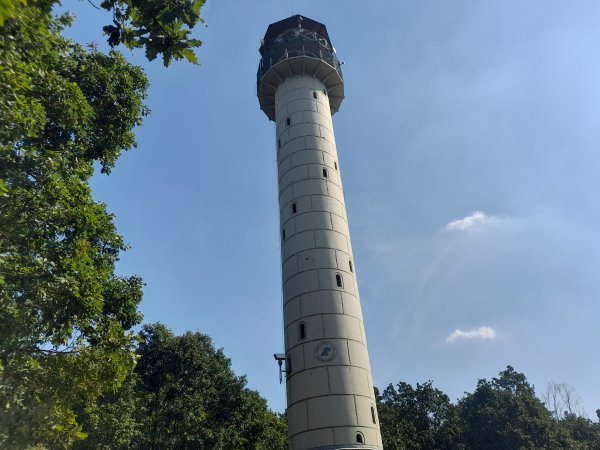

However, I have found other legends from Puszcza Zielonka about sleeping knights, ghosts, enchanted cities and golden thrones sunk in the lake, a giant aurochs fighting against king Casimir the Great, the extraordinary dinner meeting of the three brothers, Lech, Czech and Rus, and many other fascinating things.
One can read these stories on the boards by following one of the tourists trails in the forest, but if you are too curious and cannot wait until getting there in person, you are also able to read them online on the web site of the reservation (only in Polish, but you can use a translate tool, it works pretty well). Perfect way of discoveries, no matter if you are alone or with your family.



Finally, I would like to highlight that the view tower, which was completely for free, was a perfect ending for my journey. I remember that I almost skipped this trip because of not knowing the region, its possible dangers and limits, but I after doing my research, I decided that it would be a pity not to have some adventure and discover these lands on my own.
Due to my curiosity and courage, so many stories and legends I had already known just became a reality before my eyes; therefore now I have to say that as spontaneous my trip was to Greater-Poland, it was totally worth it.
